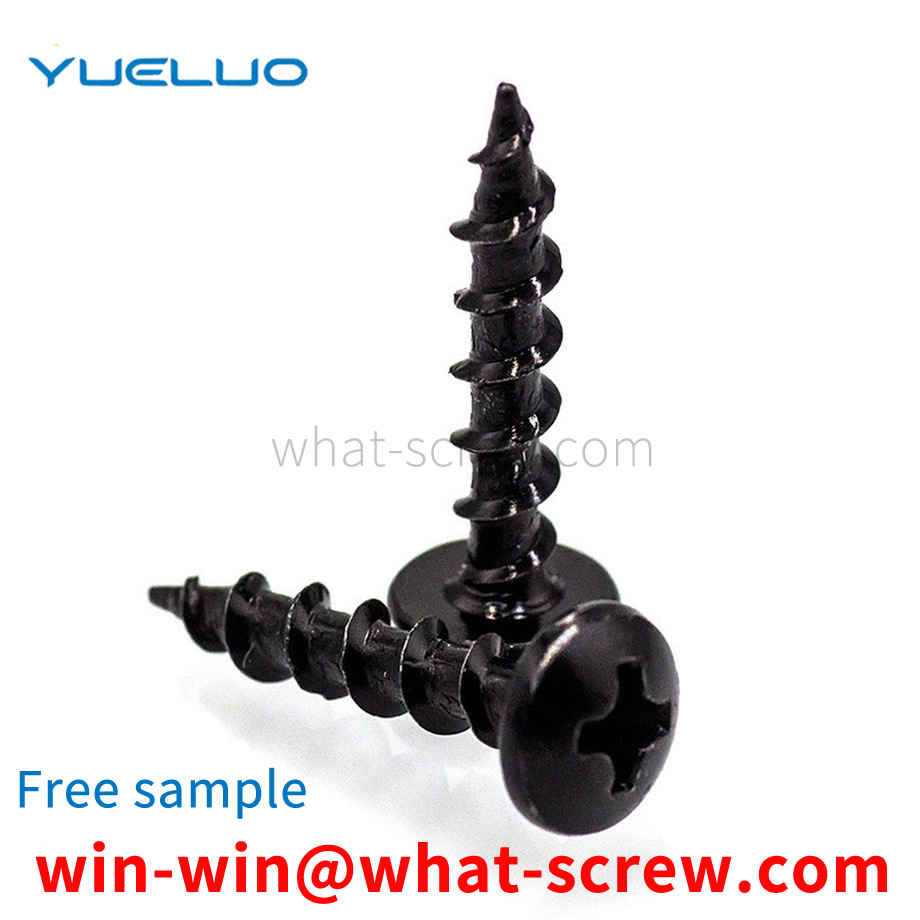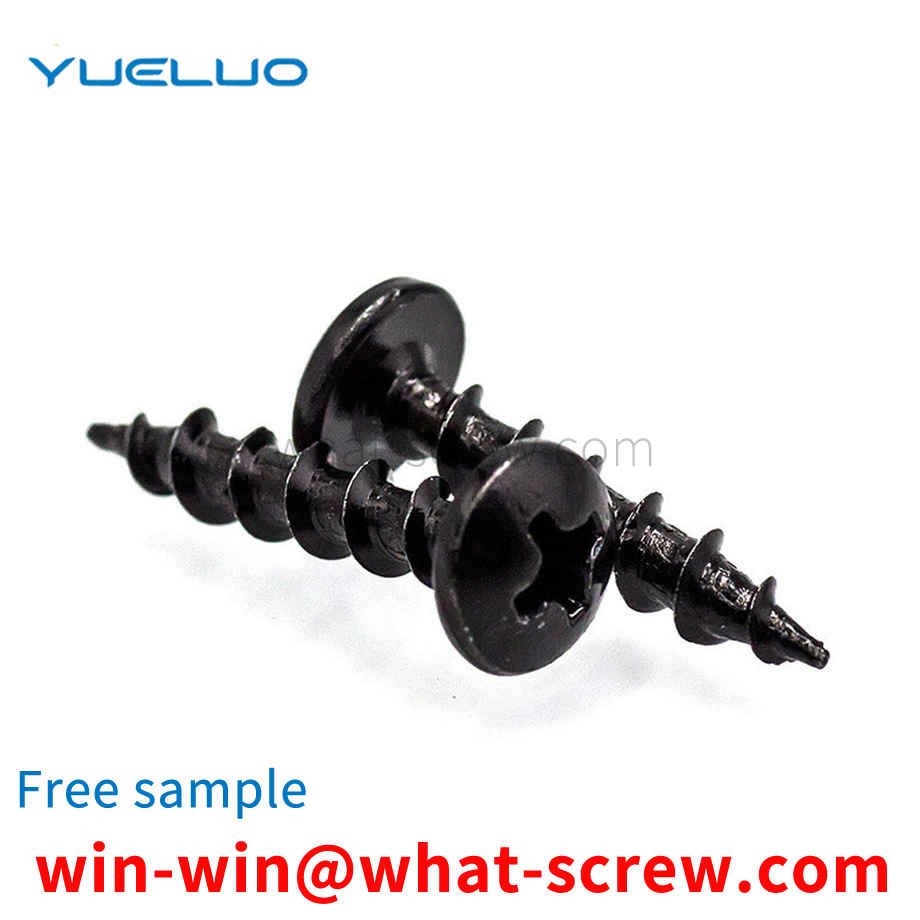Ordinary T-bolts, the bolt head is rectangular, the screw part and the bolt head are T-shaped, and the width of the head is smaller than the width of the opening part of the T-slot, so that the head of the T-bolt can extend from the length of the T-slot. Insert the T-slot into the T-slot at any position in the direction. When the workpiece needs to be fixed, turn the T-bolt 90 degrees so that the length of the head is perpendicular to the T-slot, hook the inside of the opening of the T-slot, and screw it by tightening The nut on the T-bolt threaded rod holds the workpiece in place. The T-bolt of this structure can easily connect the bolt and the base piece quickly, and is widely used, but there are also some shortcomings, due to the contact area between the head of the T-bolt and the inner side of the opening of the T-slot. If it is too small, the frictional resistance is correspondingly small. On the one hand, the bolts are easy to follow the rotation during the process of tightening the nut. Unreliable.
Two combination screws are mostly used for the connection between thin metal plates, and play a connecting role. When connecting, first make a threaded bottom hole for the connected piece, and then screw the combination screw into the threaded bottom hole of the connected piece. Since the threaded surface of the combination screw has high hardness, the inner thread can be tapped in the threaded bottom hole of the connected piece to form a connection.
The opening circlip is widely used in many industrial fields and plays a role in limiting the position of the parts. When in use, as long as the circlip is installed in the circlip groove of the part, the position of other matching parts can be effectively limited, so as to avoid the axial displacement of the matching parts. Since some opening circlips do not have circlip pliers installation holes, circlip pliers cannot be used and can only be installed by hand, which not only cannot effectively ensure the installation quality of the circlip, but also limits the efficiency of installation work.
A pin and a pin piece inserted on the pin, the width of the pin piece gradually decreases from the insertion end to the other end, and the pin piece is also provided with a protrusion, the protrusion is a triangular ratchet tooth shape, the An insertion hole is arranged on the pin, and a pawl corresponding to the protrusion is arranged in the insertion hole.
1. For low strength (below 500 N/mm2 or below 60000 psi) bolts use general soft steel, generally use SAE 1008 or JIS SWRM 8 (or SWRCH 8). 2. Lower strength (600 N/mm2 or 74000 psi) ) bolts use general soft steel, but limited carbon content grade, generally use SAE 1010 - 1015 or JIS SWRM 10 - 15 (or SWRCH 10 - 15). .3. Higher strength ( 800 N/mm2 or 125000 psi ) bolts of medium carbon steel, low carbon boron steel plus quenching and tempering, generally use SAE 1035 - 1040 or SWRCH 35K - 40K. 4. High strength (900 N/mm2 or more or 150000 psi or more) bolts use medium carbon Alloy steel or low carbon boron steel, in terms of application, if the metric Class 10.9 uses low carbon boron steel, the imprint should be added under the series imprint to become 10.9, and the imprint of the inch 8.2 grade is also used with the general Grade 8 bolts The imprint is different for easy identification. High-strength bolts made of low carbon boron steel cannot be used in high temperature conditions. The design strength exceeds Class 12.9 or ASTM A574 ultra-high strength bolts are limited to medium carbon alloy steel plus quenching and tempering. The performance grades of bolts for steel structure connection are divided into more than 10 grades such as 3.6, 4.6, 4.8, 5.6, 6.8, 8.8, 9.8, 10.9, 12.9, etc. Among them, the bolts of grade 8.8 and above are made of low-carbon alloy steel or medium-carbon steel and are heat-treated (quenching, tempering), commonly known as high-strength bolts, the rest are commonly known as ordinary bolts. The bolt performance grade label consists of two parts of numbers, which represent the nominal tensile strength value and yield ratio of the bolt material respectively. For example, a bolt with a performance level of 4.6 means: 1. The nominal tensile strength of the bolt material is 400MPa; 2. The yield ratio of the bolt material is 0.6; 3. The nominal yield strength of the bolt material is 400×0.6=240Mpa . Performance level 10.9 high-strength bolts, after heat treatment, can achieve: 1. The nominal tensile strength of the bolt material is 1000MPa; 2. The yield ratio of the bolt material is 0.9; High-strength bolts, processing and manufacturing problems are compared Small, general fastener manufacturing companies can master the manufacturing process; but problems are prone to occur in material selection and heat treatment. Material selection is the primary link. Various alloying elements have a great influence on the properties of the material, and the material must be subjected to spectral composition analysis; secondly, the fracture problem and the choice of heat treatment process have a great influence and are very important. Dealers and traders must control the inspection and performance testing links; automotive fasteners have high requirements and must carefully control the quality.
We have many years of experience in the production and sales of screws, nuts, flat washers, etc. The main products are: fine-tooth counter-thread tapping left teeth, blackened full-threaded screws, rivet nuts, hollow pins with smooth surface and other products, we can provide you with products such as Provide the right fastener solution for you.



















 Service Hotline
Service Hotline




